Blog
Your guide to crypto onramps
Users have many ways to onboard into the crypto ecosystem — from in-person swaps to on-site widgets. In this article, we discuss these.
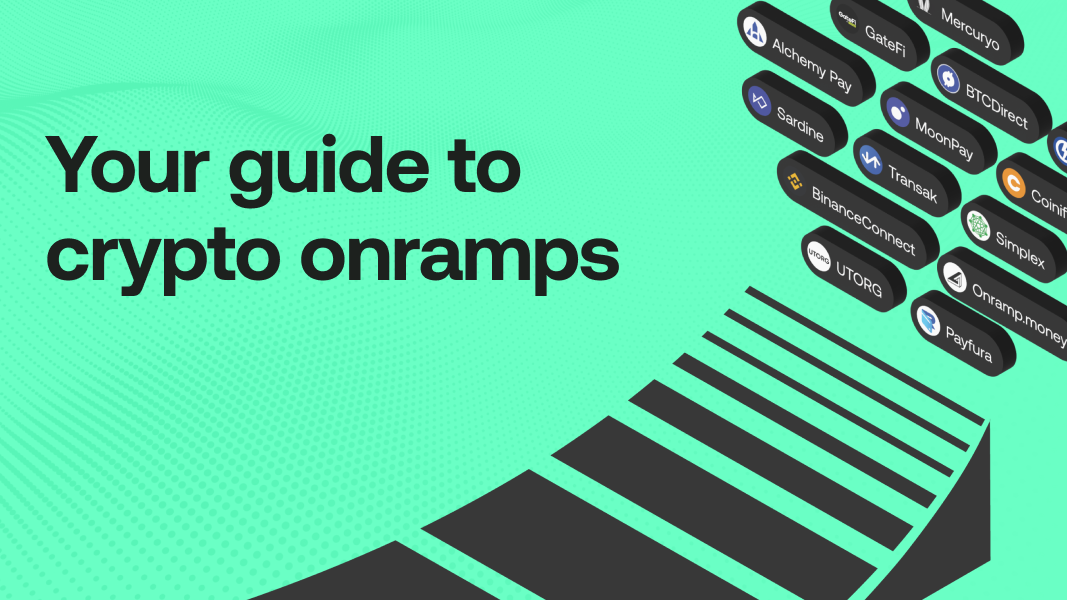
14 years ago, a nine-page document was published on The Cryptography Mailing List.
Penned by a mysterious entity we know only as Satoshi Nakamoto, it outlined the blueprint for a digital currency that required no banks, no middlemen, nor any centralized entity.
This digital currency — Bitcoin — launched a month later. And in that moment, the spark that would ignite a financial revolution was created.
Now, few people haven’t heard of cryptocurrency. Depending on who you ask, Bitcoin's a speculative asset. A handy way to pay online. A store of value. Or even the foundation for a parallel economic system.
Of course, the industry is much bigger than Bitcoin today. Ethereum, XRP, Solana, and a whole slew of other protocols make up an industry which, at the time of this writing, boasts a market capitalization of over one trillion US dollars.
But entering this exciting new paradigm isn’t exactly easy. The mainstream still faces a glaring issue: accessibility. A lack of user-friendly bridges into the ecosystem leaves many on the sidelines, eagerly awaiting an easier path to the wonderful world of cryptocurrency.
Enter the fiat-to-crypto onramp.
What is a crypto onramp?
Your customers want to buy crypto. But all they’ve got is a bank balance denominated in USD, EUR, GBP or one of those other boring, old-school currencies.
💡 Fiat is Latin for “it shall be.” This refers to the fact that the currencies we use hold value because the issuing government says so.
Swapping fiat currency for another fiat currency is easily done — most banks will do it for you. To go fiat-to-crypto, though, you’ll need a third-party service that takes your money and exchanges it for your cryptocurrency of choice. This is what we call a crypto onramp, and they come in many forms:
Bitcoin ATMs

You’d be forgiven for mistaking these for regular cash machines. You can typically find them in public spots, and the premise is simple: you feed them cash (either physically or by card), and they send BTC to an address of your choosing.
Centralized exchanges

By far the most popular onramps. Here, you create an account, submit KYC information (identity documents, facial verification and proof of address) before getting access to the crypto markets.
Depending on the venue, you can fund your account with fiat currency via bank transfers, card payments, and more. Kraken, Binance and Coinbase are all examples of centralized exchanges.
Peer-to-peer (P2P) exchanges

A peer-to-peer (P2P) exchange is an online venue, too, but it doesn’t work like its centralized counterpart. Rather, it connects buyers and sellers directly. One party posts a listing (“I’d like to buy/sell BTC at a price of [price] per coin for [payment method]”), and the other can choose to accept it.
P2P exchanges generally have a wider variety of payment methods — after all, it’s up to the user what they want to accept, be it cash, gift vouchers, PayPal or bank transfers.
LocalBitcoins is a popular player in this category.
Integrated fiat onramps

It doesn’t roll off the tongue like some of the others, but don’t let that throw you off: these are particularly valuable for crypto businesses that want to reduce the hurdles for first-time users.
Consider, for example, a decentralized application (dApp). Since they run on crypto, their users need to come prepared. To a new user, that can be a bit daunting. Do you really want to tell them to:
- Sign up for a centralized exchange
- Wait for KYC approval
- Deposit fiat
- Figure out how to buy the right crypto
- Set up MetaMask
- Withdraw their crypto
- And, only after all that, finally start using your app?
A third-party solution can strip out most of the headache with an integrated widget. Once they land on your site/wallet/exchange, users can just choose their input currency (fiat), their output currency (crypto), and click a button to check out as they would on an e-commerce store.
The third-party may require some additional information from them, but they’ll get it directly via the widget — ensuring that customers don’t get sidetracked on some laborious quest to purchase crypto.
For examples of this, look to services like MoonPay, Transak or Coinify.
What’s the best onramp solution?
There’s no one-size-fits-all answer. It depends on the user’s goal (are they buying once? Buying regularly? Trading dozens of pairs?), their country, and their tolerance for fees.
Cards on the table: we have a slight bias towards the integrated solution — particularly for businesses. It’s true of any wallet, app or platform: once you’ve captured a user’s interest, your number-one priority is to onboard them as seamlessly as possible.
In sending prospects away, even for a brief period, you risk losing them altogether. The right onramp, neatly available on your own website, can really make a difference if you implement it right.
But why choose just one?
Onramper aggregates nine different crypto onramp providers to match your users with the one that will best work for them.
For your users, it means higher transaction success rates (wherever they are) and a streamlined portal into the crypto world.
For you? It’s a headache-free, plug-and-play add-on that instantly delivers greater value to your customers.
Let us do the heavy lifting, so you can focus on what you do best.
Book a call with our experts to find out how Onramper can turbocharge your success rates.
Other articles
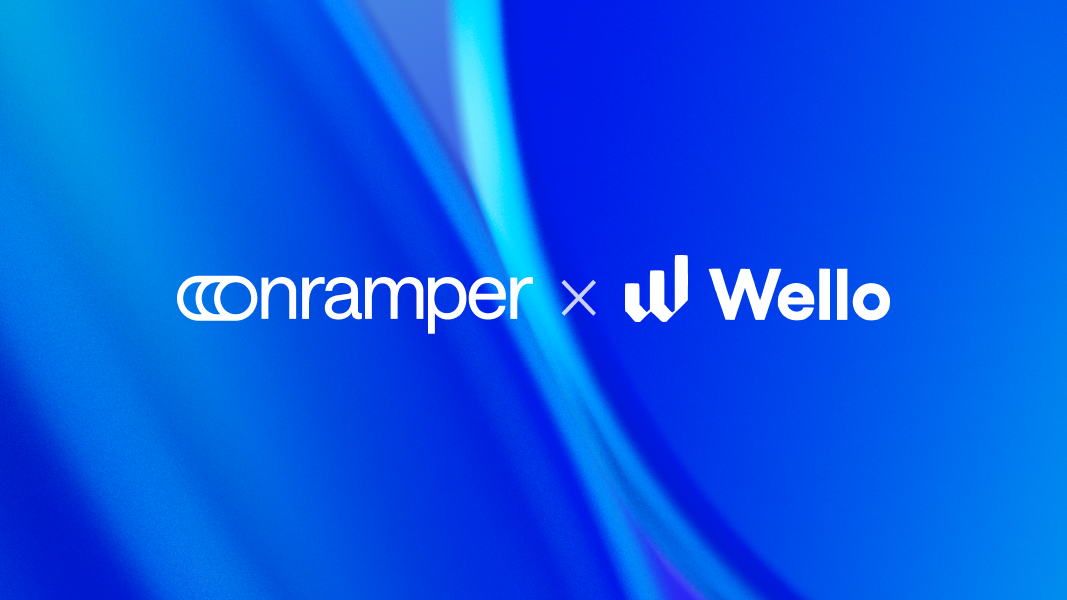
Wello Joins Onramper’s Network to Expand Crypto Onboarding in Nigeria
Collaboration strengthens Onramper’s Nigerian payment rails for all partners
December 19, 2025 – Onramper, the world’s leading fiat-to-crypto onramp aggregator, announced that it has integrated Wello, a global fiat on- and off-ramp provider, to increase crypto accessibility in Nigeria. By integrating with Onramper, Wello’s localized payment rails will reach a wider audience, beginning with Nigeria and expanding across Asia. This partnership is part of the broader plan to bring stablecoin-powered payments to local markets around the world.
Nigeria remains one of the most active crypto markets globally, but ensuring reliable and high-performing fiat-to-crypto rails in the country remains a challenge. By incorporating Wello’s localized infrastructure, Onramper strengthens its presence in the region and delivers smoother, more successful conversion paths for every partner operating in Nigeria.
“Wello will strengthen the global coverage of our aggregation engine,” said Thijs Maas, CEO of Onramper. “Its dependable and deeply localized infrastructure gives our partners, and their users, the onboarding experience they expect, in Africa and beyond.”
Wello brings strong regional expertise across Africa and the Middle East, with payment rails designed for fast-growing, high-adoption crypto markets. Its localized approach reduces failed transactions and improves uptime for Nigerian users.
Onramper continues to lead the onramp aggregation space, connecting more than 30 global fiat gateways and supporting over 2,000 digital assets. All partners integrated with Onramper will automatically gain access to Wello’s rails, unlocking improved payment methods, stronger reliability, and broader coverage in Nigeria without requiring any technical changes.
“Our goal is to build dependable stablecoin payment rails for users around the world,” said Helen Hai, Co-Founder at Wello. “Partnering with Onramper makes our infrastructure available to more wallets, exchanges, and platforms, unlocking a smoother, more efficient onboarding experience.”
Onramper’s global network supports more than 130 payment methods across 190+ countries. Its smart routing engine recommends the best available conversion in real time, maximizing the likelihood of a successful transaction and helping users receive the most crypto for their fiat.
To learn more, please visit onramper.com and wello.tech.
About Onramper
Onramper is the leading fiat-to-crypto payments aggregator, providing a turnkey API-based solution for dynamically routing fiat-to-crypto onramp flows based on algorithms optimizing for conversion, fees and payment methods. Onramper’s platform allows users of clients to buy 2000+ digital assets, in over 190 countries with over 170 payment methods in 120 currencies, with advanced routing options and unified analytics. The company is based in the Netherlands. To learn more about Onramper, visit www.onramper.com.
About Wello
Wello brings real utility to stablecoins. With compliant fiat on/off ramps, instant QR payments, and cross-border settlement. Wello’s mission is to bridge Web3 with real-world payments, empowering people to send global, spend local, effortlessly.
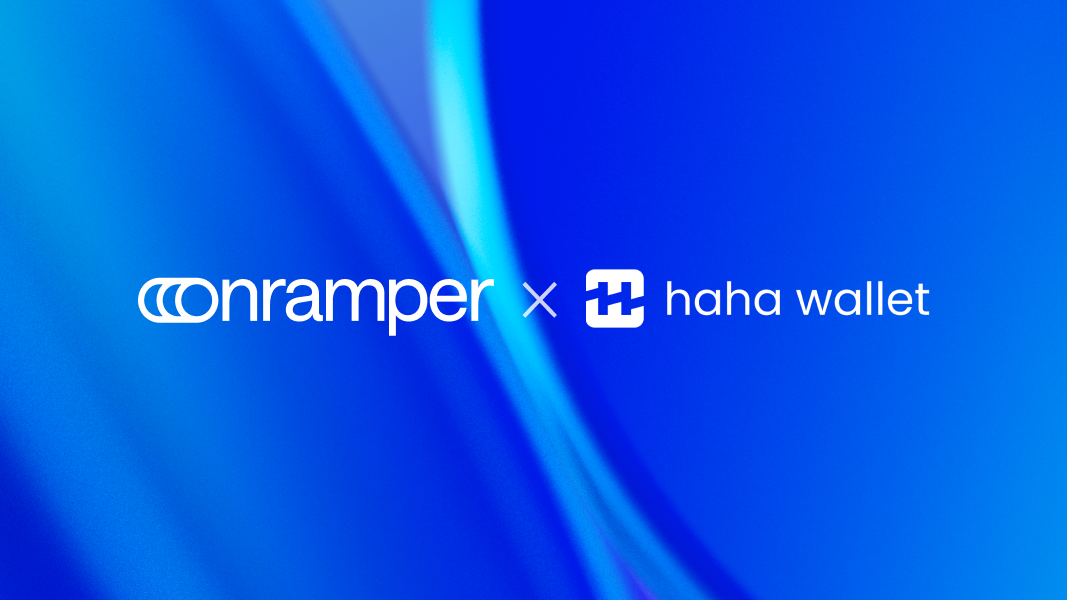
HaHa Wallet Partners with Onramper to Expand Access to the Monad Ecosystem
Partnership follows Monad Mainnet launch to unlock global onboarding
AMSTERDAM, Dec. 17, 2025 — Onramper, the world’s leading fiat-to-crypto onramp aggregator, today announced a strategic partnership with HaHa Wallet, next-generation, Monad-native crypto wallet, to broaden global accessibility for users engaging with Monad ecosystem.
Through the integration, HaHa Wallet users can now buy crypto using over 130 local payment methods across 190+ countries, benefiting from competitive rates and optimized fees. Following the launch of Monad’s public Mainnet in November 2025, the partnership makes it easier for users worldwide to enter Monad and begin trading, bridging, and exploring dApps.
HaHa Wallet has quickly become a leading gateway into Monad, offering a fast, intuitive, and reward-driven user experience. With Onramper’s global payments coverage and smart routing engine, users can move from fiat to crypto in just a few clicks and start interacting onchain.
“Realizing Monad’s full potential depends on frictionless onboarding,” said Thijs Maas, CEO of Onramper. “Our partnership with HaHa Wallet brings trusted, localized payment access directly into the Monad ecosystem. Together, we’re making it easier than ever for people everywhere to get started on Monad.”
Monad’s unique architecture enables parallel transaction execution, delivering faster speeds, quicker finality, and lower fees without sacrificing decentralization. Combined with Onramper’s global payment infrastructure, HaHa Wallet provides users with a streamlined entry point into Monad’s high-performance blockchain environment.
“Our focus is building the simplest possible entry point into the Monad Ecosystem,” said Mu Li, founder of HaHa Wallet. “Integrating Onramper allows us to offer trusted local payment methods, helping users get onchain quickly and confidently, no matter where they are in the world.”
Onramper continues to lead the onramp aggregation space, connecting more than 30 global fiat gateways and supporting over 2,000 digital assets, driving greater accessibility and inclusivity across Web3.
To learn more, please visit onramper.com and haha.me
About Onramper
Onramper is the leading fiat-to-crypto payments aggregator, providing a turnkey API-based solution for dynamically routing fiat-to-crypto onramp flows based on algorithms optimizing for conversion, fees and payment methods. Onramper’s platform allows users of clients to buy 2000+ digital assets, in over 190 countries with over 130 payment methods in 120 currencies, with advanced routing options and unified analytics. The company is based in the Netherlands. To learn more about Onramper, visit www.onramper.com.
About HaHa Wallet
HaHa Wallet is the Monad native, high performance smart wallet built to maximise how users earn and participate on chain. Purpose built for Monad’s low latency, parallel execution environment, HaHa delivers lightning fast swaps, deep native integrations with Monad dApps and ecosystem campaigns, and seamless access to multiple EVM chains through a single non custodial experience. Users earn Karma for meaningful on chain activity, unlocking rewards, ecosystem access, and future HaHa token utility, positioning HaHa Wallet as the primary consumer gateway to Monad and a rewards driven hub for Web3 participation.
For media enquiries, contact:

Introducing our new crypto trading portal: the easiest way to buy, sell and swap
Buying crypto should be simple. Selling and swapping should feel just as easy. That’s why we’re leveling up the Onramper experience to make this a reality.
Meet our new crypto portal, the world’s simplest all-in-one trading platform. It brings buying, selling and swapping together in one place with the best available fees and full global coverage.
One place for everything
It’s easy for trading flows to feel scattered, with buying, swapping and selling all living in different places. We set out to fix that..
Our portal brings everything together so the entire journey stays clear and straightforward from start to finish. You can now:
- Buy crypto with 170+ payment methods
- Sell back to fiat
- Swap 100K+ assets across 50+ networks, with 11+ liquidity providers
All from one clean, intuitive interface.
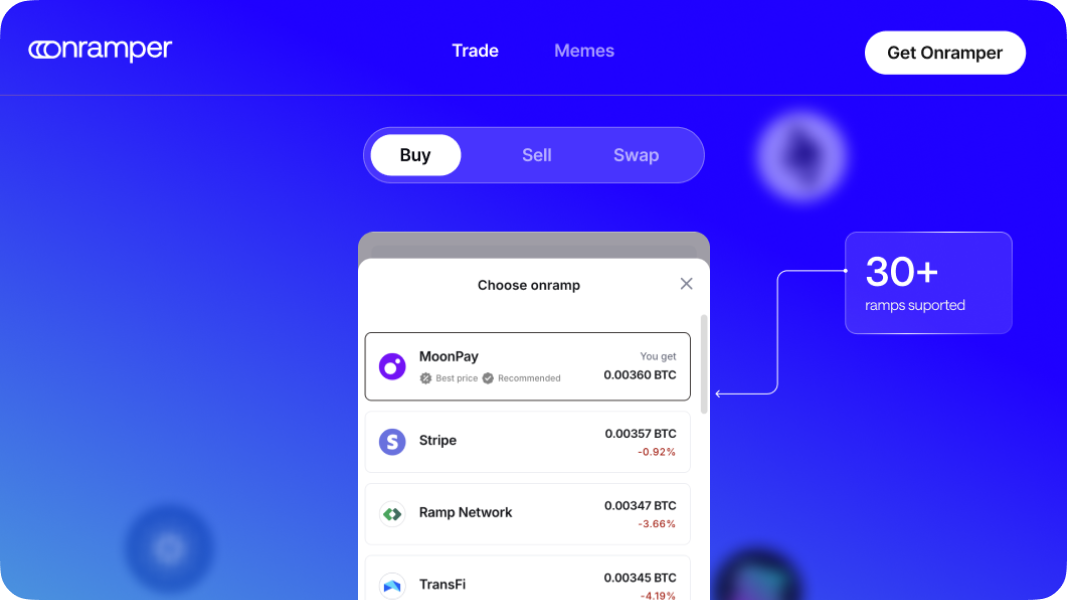
Always the best fees, automatically
Crypto pricing moves fast, with fees constantly shifting based on payment method, geography, KYC requirements and liquidity. Our smart routing engine tracks all of it in real time and selects the best provider automatically.
We do the work, and you get the best fees with the highest chance of transaction success.
Any payment method. Any user.
A global product requires global payment coverage. The new portal supports 175+ payment methods including cards, Apple Pay, Google Pay, bank transfers, regional options and alternative methods found in high-growth markets.
Since payment preferences vary by region, the interface automatically highlights the options that perform best in your area. This keeps the experience fast, familiar and easy for any user, anywhere.

Buy any memecoin on Solana with MoonGate
The rise of memecoins has changed what’s expected from a trading experience. People want speed, simplicity and access to the long tail of new tokens.
By integrating MoonGate directly into the portal, we deliver exactly that. You can:
- Sign in with Google or Apple to generate a wallet instantly
- Discover trending Solana tokens
- Buy or swap into any memecoin in seconds
No separate setup and no manual wallet creation. Just instant access.
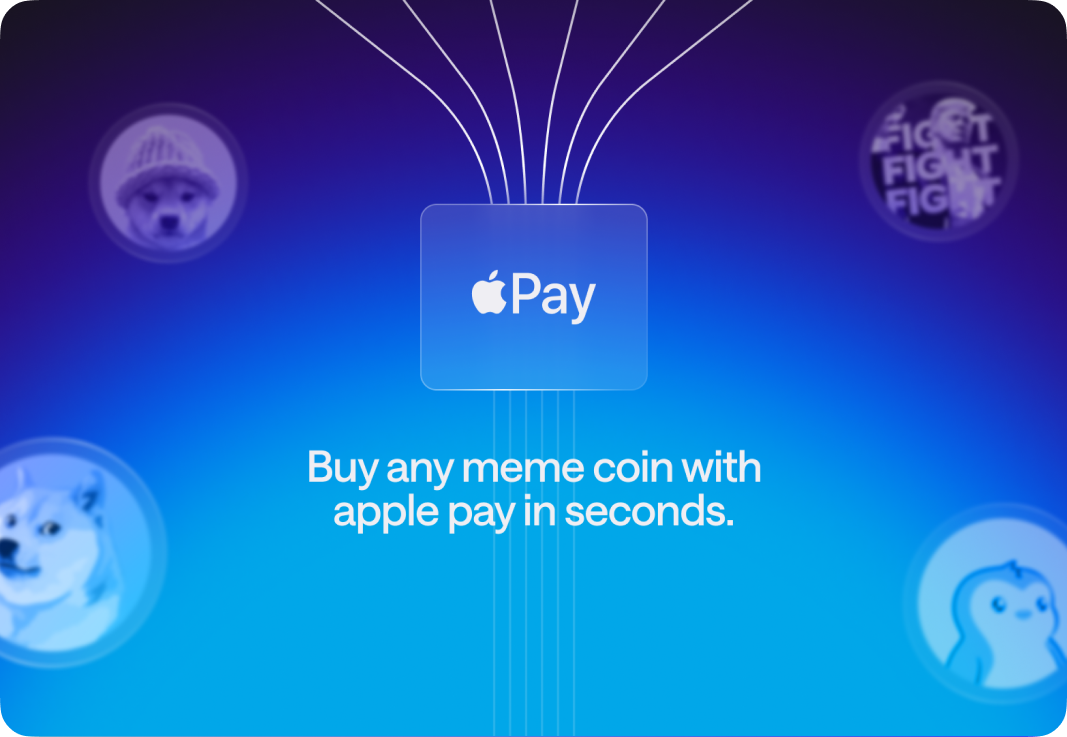
This is just the beginning
This portal isn’t an add-on. It’s a dedicated page built around a single widget that supports every trade type in one unified experience. And it’s only the first version.
We’ll continue adding new features that streamline the entire trading journey. From smarter token discovery to personalized payment suggestions, our goal is to create the smoothest crypto trading experience possible.
Try the full experience here: https://onramper.webflow.io/buy



















